This Week's Wine
Villa Maria Cellar Selection Pinot Noir, 2013, Marlborugh, New Zealand
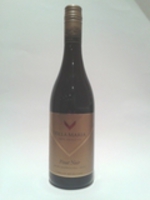
New Zealand is now producing some very fine Pinot Noir wines, with the most renowned areas for growing fine Pinot Noir grapes being Martinborough (in the Waiarapa - just north east of Wellington), Marlborough and Central Otago. This Villa Maria Pinot Noir was made from Marlborough grapes.
Pinot Noir can be a frustrating grape to grow due to its early budding, relatively thin skins and its compact bunches which tend to make it prone to rot infection. However, despite these disadvantages, it tends to ripen early so it can be picked ripe and full of flavours. The typical characteristics of Pinot Noir are strawberry, cherry, plum, raspberry, mushroom, earthy and beetroot aromas. Pinot Noir from Martinborough is typically more delicate and earthy wheras wines produced using Marlborough fruit have raspberry and cherry as the more dominant characters. Central Otago Pinots' are full bodied with more of the black cherry, plum and herbal aromas.
Michael Cooper rates the Villa Maria Cellar Selection Pinot Noir as one of New Zealand's best value Pinot Noirs. I really enjoyed this wine with its strong cherry, plum and spice flavours and showing very good complexity for a low priced Pinot Noir. Not only is it great drinking currently, but it is also a serious cellaring proposition as it will easily go another 5-8 years if carefully cellared. I paid $21.99 for this bottle which was fantastic buying.
Canaletto Primitivo 2011, Puglia, Italy
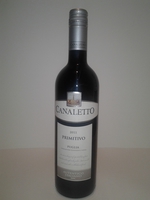
Some of the greatest things about wine are that there is just so much variety and interesting places where grape vines are grown and wines are produced. In southern Italy, on the "heel" of the boot is a wine producing area called Puglia. The grape varieties of Puglia were greatly influenced by Greece as it is the neighbouring country across the Adriatic Sea.
One of grape varieties grown in this region is Primitivo. Zinfandel and Primitivo are two very similar clones of a grape variety (Crljenak Kastelanski) from Croatia. The Primitivo vines in Puglia are grown on alberello trellis (low, individual, bush-like training) systems to help protect the grapes from hot sun. These conditions produce robust, mouth-filling, richly fruity wines which at times have high alcohol.
Canaletto Primitivo 2011 is produced by Casa Girelli and the grapes were selected from low-yielding vineyards in the southern parts of Puglia. The vinification process included the grapes remaining intact and the maceration process occurring gently for 10 days. Maceration is the process of leaching all the phenolic, tannin and colouring agents from the grape skins and seeds into the wine. This has resulted in a wine with ripe dark berry characters, nicely integrated with oak to give cedar and chocolate nuisances. I enjoyed this wine and it would go perfectly with Italian cuisine, in particular pasta. It is available from Vetro, Rotorua for $20.
Esk Valley Hawkes Bay Merlot Cabernet Sauvignon Malbec 2013
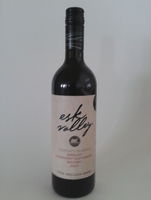
With the change in season to autumn and the arrival of cooler evenings and shorter days, the summer lighter style cuisine that went so well with Sauvignon Blanc and Riesling should now make way for richer foods with more savoury flavours. Wines with more tannin, acid and darker fruit characters tend to go more effectively with richer food characteristics.
Wines made from traditional Bordeaux grapes are ideal for serving with richer cuisine. These wines will often be blended using Cabernet Sauvignon, Merlot, Malbec, Cabernet Franc and perhaps Petit Verdot. Cabernet Sauvignon produces concentrated flavours of blackberries, black currants, black cherries and fragrances of tobacco, truffle and cedar. Merlot typically has flavours of blackberries, plums, leather and chocolate. Merlot also has high sugar and lower acidity compared to Cabernet Sauvignon which makes these two grape varieties ideal for blending together. Malbec characteristics are of cherry, plums and chocolate and it adds inky-black colouring to wines.
Esk Valley Hawkes Bay Merlot Cabernet Sauvignon Malbec 2013 is a great value red wine to have with the richer foods of autumn. It has a bouquet of dark fruits (blackberries, plums and black cherry) with subtle oak seasoning. The tannins are ripe and soft, yet there is plenty in there to give great body and weight. At around $15-20 per bottle, it is good buying and suitable for aging in the cellar for the next 5 - 8 years.
Alta Vista Premium Torrontés 2012 from Argentina
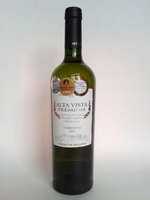
This week's wine is something a bit different and it is not readily available through the supermarkets. However, it is for these reasons it is worth tracking down and trying. This wine is also a fantastic summer complement to salads and light style meats and fish. With spring now just starting, it is a good time to think ahead and get some good summer drinking in the cellar.
The Torrontés grape is mostly grown in Argentina where it is like New Zealand Sauvignon Blanc, one of the signature wines for the country. Believed to have been originally imported into Argentina by the early missionaries, this grape variety is now regarded a native of the country. The characteristics of Torrontés are typically of ripe white stone fruit, citrus, floral and spice which in many respects is comparable to a cross between Gewurztraminer and a Muscat. But it has the freshness of a Sauvignon Blanc. Torrontés is best drunk young as too long an aging period can lead to a loss of the fresh fruit characters which make this wine so appealing.
Alta Vista Premium Torrontés, 2012 is an excellent example of this style of wine, full of fresh and fruity characters along with floral and spicy notes. The finish is long and with a well balanced mineral and acid touch. Look for this wine in specialist wine stores or contact South2South.com. Retailing for around the $28 mark, it is definitely worth a try if you would like something different from what is normally on offer.
Villa Maria Cellar Selection Dry Riesling 2013 - from New Zeland
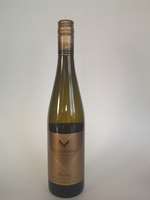
Riesling is one of my favourite varieties as it can be made in many different styles. Riesling can be dry or sweet and cold fermented to retain much of its aromatics. Furthermore, it can be exposed to botrytis (fungi that shrivel the grapes and concentrates the sugar content). With just under 800 hectares of Riesling planted throughout New Zealand, this grape variety is the sixth most common in New Zealand.
The world's most renowned Rieslings are produced in Alsace, France or in the Rheingau and Mosel areas of Germany. In these areas, Riesling is typically strongly scented with the flavour being a harmony of honey-like fruit and steely acid. Alsace is nestled on the eastern side of the Vosges Mountains which helps shelter the grapes and limits rainfall to two-thirds that of the adjoining plains. This gives 50 additional days of sunshine in areas of Alsace which allows the grapes to ripen slowly and develop concentrated fruity characters.
Villa Maria is no stranger to Riesling as it started growing this variety back in 1977. Since then Riesling has become one of its standout wines being marketed under a range of labels Private Bin, Cellar Selection and Reserve. Villa Maria Cellar Selection Dry Riesling 2013 has all the hallmarks of an excellent vintage. The fruit character is intensely citrus, orange blossom and with a minerality of wet stone. The lemon and lime characters are immense. This is an excellent cellaring proposition and at around $15-18 a very good option to buy.
